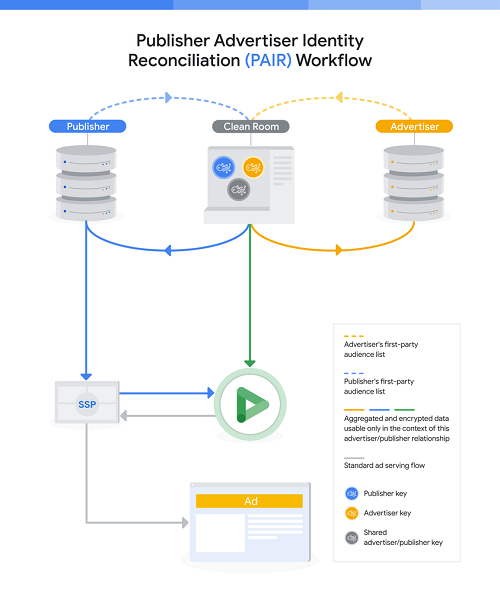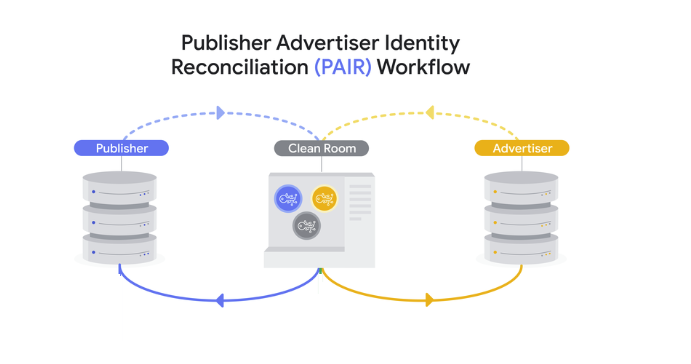As digital platforms work to find new, privacy-safe solutions for ad targeting, in line with rising consumer expectations, Google has developed a new process for Display and Video 360 campaigns which will facilitate personalized ad targeting on selected websites, where consumers have given explicit permission for both the advertising brand and the host site to reach them.
It’s not as convoluted as it sounds – here’s how it works:
Google has developed a new process that it’s calling Publisher Advertiser Identity Reconciliation, or ‘PAIR’ for short.
With PAIR, advertisers will be able to reach users that have given them their contact info, on sites that they’ve also visited and provided permissions to.
As explained by Google:
“For example, imagine you’re a shoe retailer and a group of people have signed up to your store’s mailing list. Separately, these same people on your list have also shared their email addresses with a publisher when browsing content online. With PAIR, you will be able to reach these people with relevant ads on that publisher’s website, because they have an existing relationship with you and with the publisher.”
In other words, it’s cross-matching the databases of the advertiser and the ad platform to facilitate direct targeting.
“PAIR gives advertisers the ability to more closely connect with their known audiences, while avoiding tracking individuals across the web. As a result, advertisers can show relevant ads to some of their highest-intent audiences, helping to increase advertising performance and hit marketing objectives, while respecting people’s privacy expectations.”

As you can see in this overview, the process also uses ‘Clean Rooms’, which help manage the data upload and encryption process. Google, Facebook and Amazon have all used Clean Room processes for years to ensure that no user-level data is directly shared between parties, while the aggregated data is only ever usable by the associated business/platform. Now it’s being added to Display and Video 360 campaigns as well.
Essentially, you’ll be able to show your ads to people who’ve got an existing relationship with you and the ad hosting site – which is actually likely to be a lot of people, considering the amount of users who visit some of the top publisher pages.
It’s an interesting solution to the challenges of data privacy in ad targeting, and connecting with relevant audiences without accessing each system’s data. It’s not the solution that will facilitate full audience targeting within this more advanced data privacy state. But it’s another of the many options being tested by the major platform, which, cumulatively, should facilitate more options while protecting your information.



